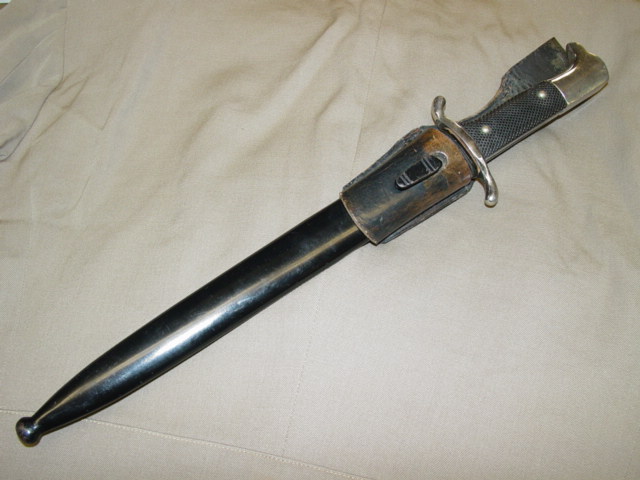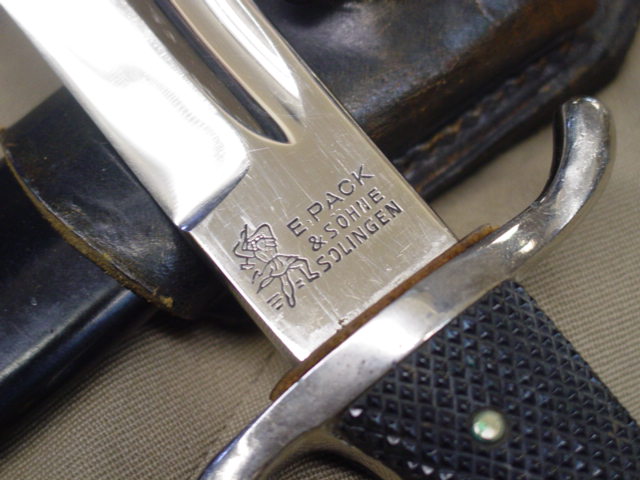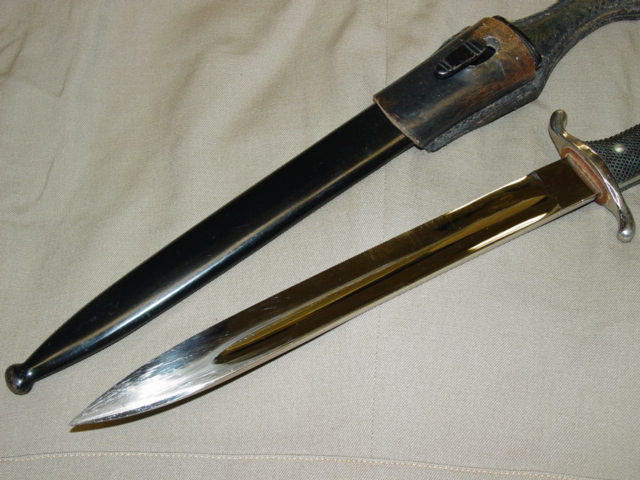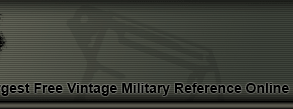K98 Bayonet -
The Karabiner 98 Kurz (often abbreviated Kar98k, K98, or K98k) was a bolt-action rifle adopted as the standard infantry
rifle in 1935 by the German Wehrmacht, and was one of the final developments in the long line of Mauser military
rifles.
The 98K bayonet was developed originally for combat purposes. however, during the Third Reich
the parade version emerged. Its purpose
was to be shown at social events. It was a symbol of pride of belonging to a group. Some of
these types included the stag handle
and the engraved blade.
|

The bayonet was all chromed. The handles were black in color, plastic construction with a
heavily checkered pattern. They were attached to the tang via the use of two rivets. The
pommel was of "dove" head pattern, the lugnut release button was not present since the
bayonet was not meant to be attached to a rifle.
The cross guards were in an "S" pattern, one end pointing up while the other is pointing down.
The ends were rounded.
The scabbard was of metal construction. Painted black. The end has a small ball point. A
hook is attached to the side as to allow the leather frog to be secured.
|

The base of the blade is stamped with the manufacturer's
logo, which consists of the figure of a man
standing with a sword ready to strike overhead. To the side are the names E Pack $ Sohne.
Just below that is Solingen, the name of the town where the bayonet was produced.
|
 |
|
This page is a recognition and identification guide for German bayonets. Multiple
detailed photos of a specific sample are provided. Descriptions point out specific
points that should be noted.
One of the most commonly asked questions is "How much is my German bayonet worth?".
A price guide is included here to address this question. The value of the Nazi bayonets is
reviewed over a period of several years. A trend can be observed. The present worth
of the police sword in the collector's market is illustrated.
This service is provided free of charge to the visitor/enthusiast courtesy of
MilitaryItems.com,
a company dedicated
to the preservation of military history and to providing quality military antiques and
collectibles to museums, institutions and the general public.
|
|
|


|
|
Many German edge weapons are currently
reproduced.
It is becoming more difficult to be able to tell the fake ones from the real ones because
the quality of the reproductions is improving. The collector must become familiarized with
the construction style and materials employed in the manufacturing of this item.
Attention to the details is critical in order to be able to determine the authenticity of
the collectible.
If you have an interest is seeing other edge weapons of the Third Reich, you can do so by going
to our
WWII German daggers and Swords
identification guide, Where we cover blades from the Heer (Army), Navy (Kriegsmarine), Air Force
(Luftwaffe) and other organizations.
|







